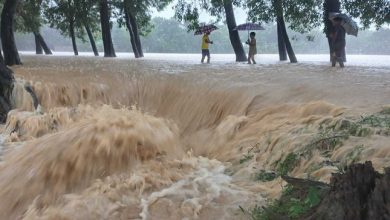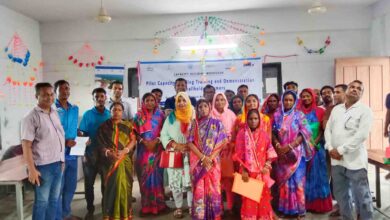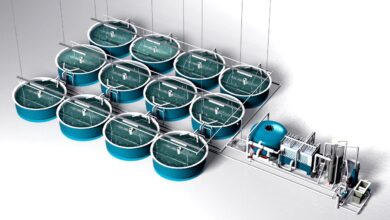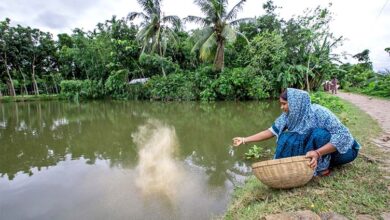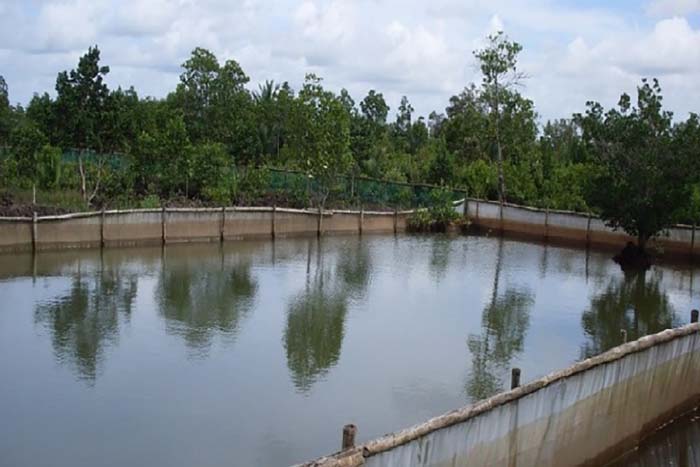
Are you seeking a quick solution to increase the number and size of fish in your pond? A fish pond’s production of beneficial phytoplankton, a microscopic, free-floating algae that serves as the foundation of the food chain, is actually increased by fertilization. Zooplankton have access to additional food by expanding the phytoplankton in a pond. Fertilization can increase fishing pond productivity. But not all ponds require fertilizer.
Necessity of fertilization:
Fertilizers encourage the growth of planktonic algae, which are a source of food for many fish, by increasing the availability of key nutrients. Animals that consume algae are also produced as a result of fertilization, including some fish like the Chinese silver carp and the Nile tilapia.
Farmers employ pond fertilization to increase a water body’s biological productivity, which enhances fish growth and abundance.
Nutrients enhance the growth of microscopic plants (phytoplankton) in the water when ponds are fertilized . Fish consume zooplankton and larger creatures, both of which are fed on by phytoplankton. The growth of rooted aquatic weeds can be hampered and light from reaching the pond bottom can be blocked by an overabundance of these microscopic plants, which can also generate a “bloom” in the water. Fish farmers and owners of recreational farm ponds fertilize their water bodies to increase fish output and prevent the formation of rooted aquatic weeds. Enhancing the amount of naturally occurring food (phytoplankton and zooplankton) available to fry, larval fish, or species that are efficient filter feeders is the goal of fertilizing aquaculture ponds.
Which pond should not be fertilized?
Before you start, there are a few things to bear in mind. Firstly, you should determine the alkalinity of your ponds. Agricultural limestone should be put to ponds with low alkalinity before beginning a fertilization program. Before beginning a fertilization program, have it tested if you are unsure of the alkalinity. Moreover, there should be no tolerance for algae or vegetation when fertilizing. An essential first step in creating the optimal fish habitat is to inspect the pond before fertilizing it. Prior to fertilizing, any undesirable vegetation or algae should be treated.
Ponds with dominant undesirable fish species should also wait to be fertilized until those fish have been removed. Even while uneaten food is an extra source of nutrients, it is usually not essential to fertilize catfish ponds when the fish are frequently fed. Fish growth is greatly aided by feeding catfish in ponds with low alkalinity water.
Until the issue is resolved, ponds that are murky, have weed infestations, or experience excessive water flow shouldn’t be fertilized. Mud blocks water’s access to light, which slows the growth of phytoplankton. It is never a good idea to fertilize weedy ponds because the nutrients will only encourage the growth of additional weeds rather than phytoplankton.
Fertilizer nutrients are diluted and rendered useless by excessive water flow, which occurs when the volume of the pond is altered in less than two weeks. Moreover, nutrients that are pushed out of the pond can contaminate streams.
Choosing appropriate fertilizer:
Any retailer of agriculture supplies will have fertilizers available. Unless the product contains additional components that may be detrimental to fish or other aquatic species, any fertilizer formulation with the right nutrition levels can be used, even if some are made expressly for ponds.
For improved outcomes, pick phosphorus-mixing fertilizer. There are three main kinds of inorganic fertilizer available which are liquid, powdered and granular. The easiest forms of fertilizer to dissolve are liquid, powdered and then granular. Although powder is more expensive than liquid or granular versions, it is quite simple to use.
A great fisheries management strategy that will boost the number of fish a pond can host is fertilization. Ponds that have been properly fertilized can support three to four times as many fish as ponds that have not been treated. Although clear water may be pleasing for the eye, it lacks the phytoplankton and zooplankton that form the basis of the aquatic food chain. A healthy plankton bloom throughout the growing season gives small fish a plentiful food source and aids in their ability to fend off predators.
Farhana Islam
Agriculturist, Researcher

